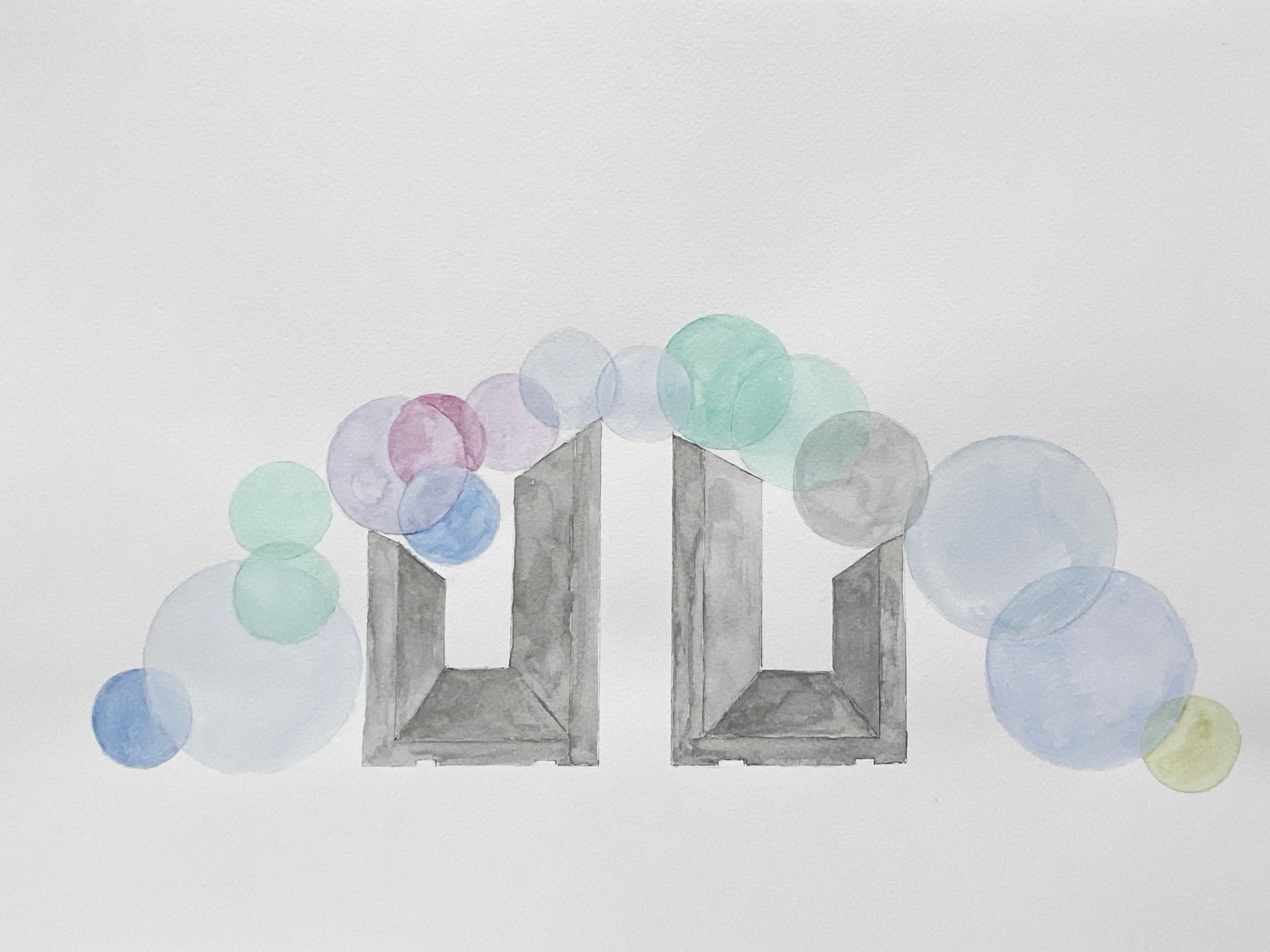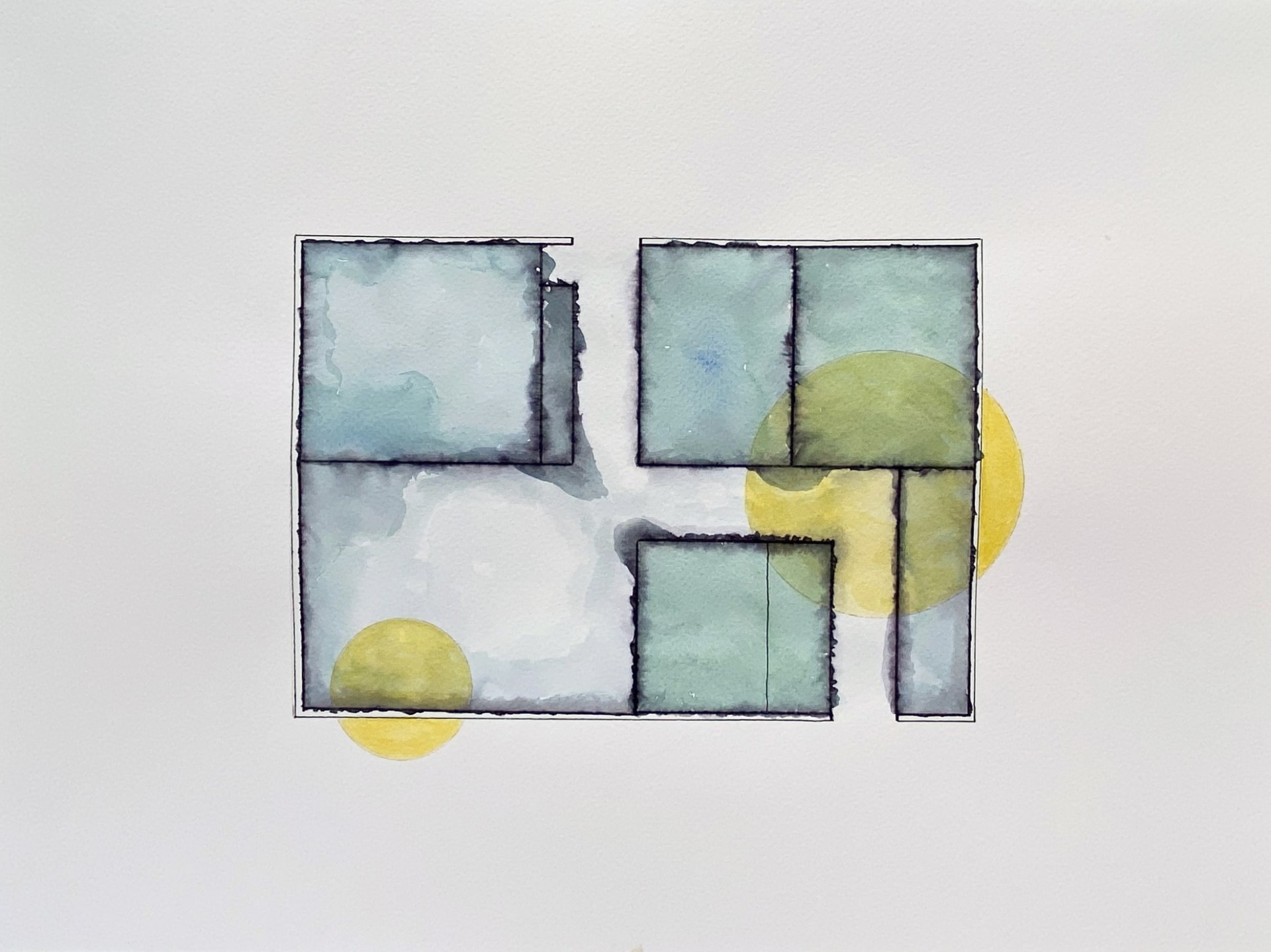Water in the space of nowhere
- Location: Paris, France
- Area: Art
- Year: 2023
- Work Type: Professional
- Institute / Firm: Christine Melchiors
- Status: Conceptual
- Team Members: non
- Supervisor: non
Art work.
3 of 12 drawings, watercolor on paper. Inspired by the books "Posséder la nature" F.Graber and F.Locher , "The biggest estate on eart" Bill Gammage, and articles in The New York Times, Nov, Dec, Jan, 2022/23.
Some cultures and territories (e.g. Aborigines) establish a particular relationship with nature, with the land: a relationship that is more intangible than one based on possession. The belonging is expressed through lived stories, symbolic traces, daily walks, or through small actions that mark the landscape in an ephemeral way.
This laissez-faire attitude towards nature is opposed to what we know in Europe, where the landscape is formed according to the division of a cadastral plan, the concept of agricultural exploitation or according to the aesthetic experience that seeks to frame and control nature in a consensual ideal linked to the needs of its users.
This property-managed grid lies like a tight net over "the land" and seems to be a contributing factor to the climate challenges we face today and especially to the way we can resolve them. Complex legal issues arises when it comes to sharing water or determining what to do with it when there is too much of it.
 "The loss of rainfall in runoff", watercolor on paper 40x30 cm, 2023.
©Christine Melchiors
"The loss of rainfall in runoff", watercolor on paper 40x30 cm, 2023.
©Christine Melchiors
 "Capturing water in extreme events", watercolor on paper 40x30 cm, 2023.
©Christine Melchiors
"Capturing water in extreme events", watercolor on paper 40x30 cm, 2023.
©Christine Melchiors
 "Water division tunnels", watercolor on paper 40x30 cm, 2023.
©Christine Melchiors
"Water division tunnels", watercolor on paper 40x30 cm, 2023.
©Christine Melchiors